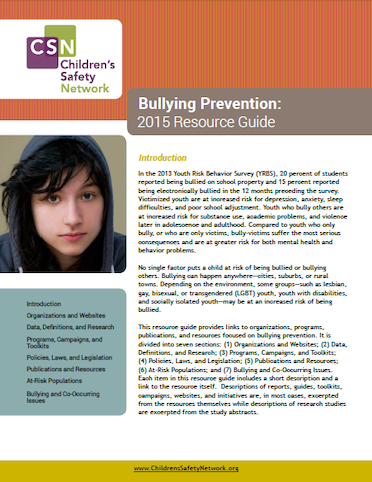
In the 2013 Youth Risk Behavior Survey (YRBS), 20 percent of students reported being bullied on school property and 15 percent reported being electronically bullied in the 12 months preceding the survey. Victimized youth are at increased risk for depression, anxiety, sleep difficulties, and poor school adjustment. Youth who bully others are at increased risk for substance use, academic problems, and violence later in adolescence and adulthood. Compared to youth who only bully, or who are only victims, bully-victims suffer the most serious consequences and are at greater risk for both mental health and behavior problems.
No single factor puts a child at risk of being bullied or bullying others. Bullying can happen anywhere—cities, suburbs, or rural towns. Depending on the environment, some groups—such as lesbian, gay, bisexual, or transgendered (LGBT) youth, youth with disabilities, and socially isolated youth—may be at an increased risk of being bullied.
This resource guide provides links to organizations, programs, publications, and resources focused on bullying prevention. It is divided into seven sections: (1) Organizations and Websites; (2) Data, Definitions, and Research; (3) Programs, Campaigns, and Toolkits; (4) Policies, Laws, and Legislation; (5) Publications and Resources; (6) At-Risk Populations; and (7) Bullying and Co-Occurring Issues. Each item in this resource guide includes a short description and a link to the resource itself. Descriptions of reports, guides, toolkits, campaigns, websites, and initiatives are, in most cases, excerpted from the resources themselves while descriptions of research studies are excerpted from the study abstracts.